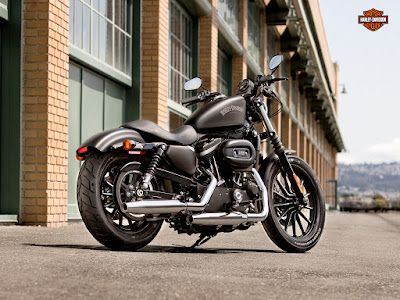The advent of self-driving technology has sparked a wave of innovation across various industries. From autonomous cars to delivery drones, the possibilities seem endless. Among these technological advancements lies a seemingly unconventional concept – autonomous motorcycles.
What is an Autonomous Motorcycle?
An autonomous motorcycle, also known as a self-riding motorcycle, is a two-wheeled vehicle equipped with sensors, cameras, and advanced processing systems that enable it to navigate and operate without human intervention. These motorcycles are designed to maintain stability, detect and respond to their surroundings, and make calculated decisions to ensure safe and efficient rides.
The Potential Benefits
While the concept of an autonomous motorcycle may raise doubts and curiosity, it offers several potential benefits that could revolutionize transportation and beyond:
Improved Safety: With advanced sensors and algorithms, autonomous motorcycles can anticipate potential hazards and react rapidly, reducing the risk of accidents caused by human error.
Efficient Traffic Flow: These motorcycles can communicate with other autonomous vehicles, optimizing traffic flow and reducing congestion. This results in shorter travel times and lower emissions.
Delivery and Logistics: Autonomous motorcycles have the potential to enhance delivery services, especially in crowded urban areas. They can navigate through traffic and deliver packages swiftly and securely.
Accessibility: Autonomous motorcycles could provide accessible transportation options for individuals with mobility challenges, giving them greater freedom and independence.
The Challenges to Overcome
Implementing autonomous technology in motorcycles presents unique challenges that need to be addressed before widespread adoption becomes feasible:
Balance and Stability: Motorcycles rely on human input to maintain balance and stability. Designing autonomous systems that can mimic human body movements and respond instantly to changes in terrain is a considerable engineering feat.
Adapting to Road Conditions: Motorcycles face diverse road conditions, including potholes, uneven surfaces, and unpredictable obstacles. Autonomous systems must be capable of handling these challenges and reacting accordingly.
Interaction with Human Operators: Autonomous motorcycles need to integrate with traditional, human-operated vehicles seamlessly. The ability to understand and anticipate human behavior on the road is crucial for safe coexistence.
Legal and Ethical Considerations: The legal framework surrounding autonomous vehicles is still being developed. Laws and regulations need to be created and refined to address potential concerns regarding liability, data privacy, and cybersecurity.
The Future of Autonomous Motorcycles
Despite the challenges, the future of autonomous motorcycles holds immense potential. Manufacturers and researchers are actively working to overcome the technical and regulatory obstacles and unlock the following possibilities:
Enhanced Motorcycle Safety: Autonomous systems can constantly monitor surroundings, reducing the risk of accidents caused by human error.
Intelligent Traffic Management: The integration of autonomous motorcycles with traffic control systems can optimize traffic flow and minimize congestion, enhancing overall transportation efficiency.
Improved Fuel Efficiency: Autonomous motorcycles can analyze road conditions and adjust their speed and throttle control to maximize fuel economy, minimizing environmental impact.
Advanced Riding Assistance: By providing real-time data on road conditions and potential obstacles, autonomous motorcycles can enhance the riding experience, allowing riders to focus on enjoying the journey.
Conclusion
Autonomous motorcycles represent a fascinating and innovative frontier in transportation technology. While there are hurdles to overcome, the potential benefits in terms of safety, efficiency, and accessibility are undeniable. As autonomous technology continues to evolve, we may soon find ourselves sharing the roads with these self-riding marvels, transforming how we view motorcycles and their place in the future.

